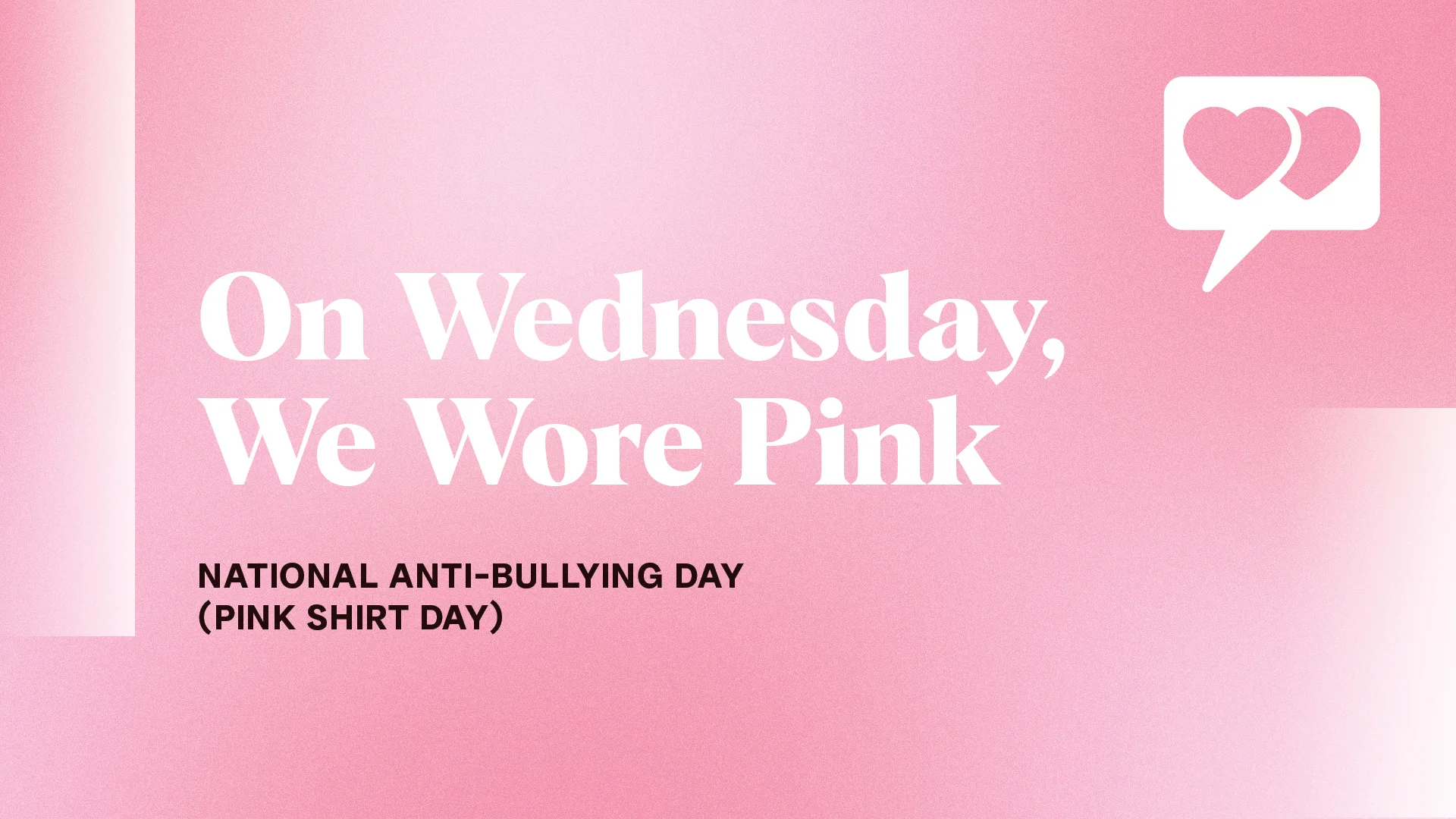
Just like The Plastics, on Wednesday, we wore pink. But unlike Regina George and her brigade of loyal followers, we’re not cool with bullying.
February 22 was Pink Shirt Day, which began as a show of solidarity for victims of bullying, raising awareness of the harm it creates. While many people may associate bullying with kids on a playground, the truth is, people of all ages can be victims of bullying—and a common setting for it to take place is at work.
Here’s how you can be proactive against bullying in the workplace and why it matters.
Workplace bullying is a bigger problem than you might think
Workplace bullying is defined as “repeated maltreatment of an employee by one or more other employees; abusive behaviour that is demeaning, intimidating or threatening; workplace sabotage or verbal abuse.”
Obviously, bullying sucks because it hurts people—but as an organization, if you fail to address workplace bullying, the consequences are far-reaching. Here are some shocking stats to put things into perspective:
- 23% of victims of workplace bullying resign from their job, and this rate continues to increase.
- 65% of workplace bullies are managers or bosses, and 67% are men.
- 40% of US workers (79.3 million) are affected by workplace bullying.
- The consequences of bullying can result in absenteeism, lost productivity, turnover, and increased medical costs.
- The transition to remote work has drastically increased the rates of workplace cyberbullying.
- Victims of workplace bullying have a 29% chance of being fired or forced out.
Taking action against workplace bullying is more important than ever
Fostering diversity and inclusion in the workplace is essential for progress and innovation, and more companies are committing to hire more diverse workers. The thing is, when a group of people have vastly different experiences and backgrounds, some individuals may be at greater risk of bullying if you haven’t adequately trained your team.
Improving workplace diversity doesn’t start and end with hiring employees from marginalized communities. To create a respectful, healthy space where staff can be themselves, ensure all employees accept and uphold the values and expectations of your company culture. Take a proactive approach to anti-bullying by offering diversity training, anti-harassment training, and other learning resources for all team members, and have an action plan to address workplace bullying when it happens.
3 anti-bullying actions to take in the workplace
Want to put a stop to workplace bullying but aren’t sure where to start? Here are three ways to create a safe and accepting work culture where employees feel respected and valued.
1) Create accessible channels for addressing concerns
Establish a standard method of contact for when harassment or bullying occurs between employees (or even customers and clients). This could be through email, private messages on communications apps, or over the phone. Respond to concerns as soon as possible, actively listen to the employee, thank them for coming forward with their experience, and make a plan to prevent the situation from happening again.
2) Adopt a “Come as you are” culture
People from marginalized communities can face discrimination against their appearance, behaviours, abilities, or lifestyles—at work and in their daily lives. It was once common for businesses to ban BIPOC employees from wearing traditional hairstyles like braids and locs, and these kinds of discriminatory practices persist today. For the 2SLGBTQ+ community, it wasn’t until 2020 that the US Supreme Court ruled that firing employees because of their sexual orientation or gender identity was discrimination that violated federal law.
Encouraging employees to come as they are and express themselves authentically creates a healthy environment where people can focus on doing great work—not socially masking or fearing judgment. It’s much easier and more fulfilling to be part of a team where you can truly be yourself.
3) Provide Consent at Work training
Not only did we help develop the brand identity and campaign for SERC’s Consent at Work training—we enrolled in the program, too! Even though we felt pretty confident in our inclusive company culture at UpHouse, we were amazed at how much there was for us to learn. Understanding how to practice a culture of consent at work offered endless insight into creating a work environment where people feel respected. We highly recommend it to businesses across all industries!
Wearing bright pink clothing certainly isn’t out of the ordinary for our colourful team of creatives. Still, we were eager to join in solidarity to raise awareness of this important cause. Remember: if you witness bullying at work, don’t be a bystander! Use your voice as a force for good and embrace the things that make us different. Championing diversity is essential—for your business, the world, and all the incredible people who have been made to feel like they don’t belong.




